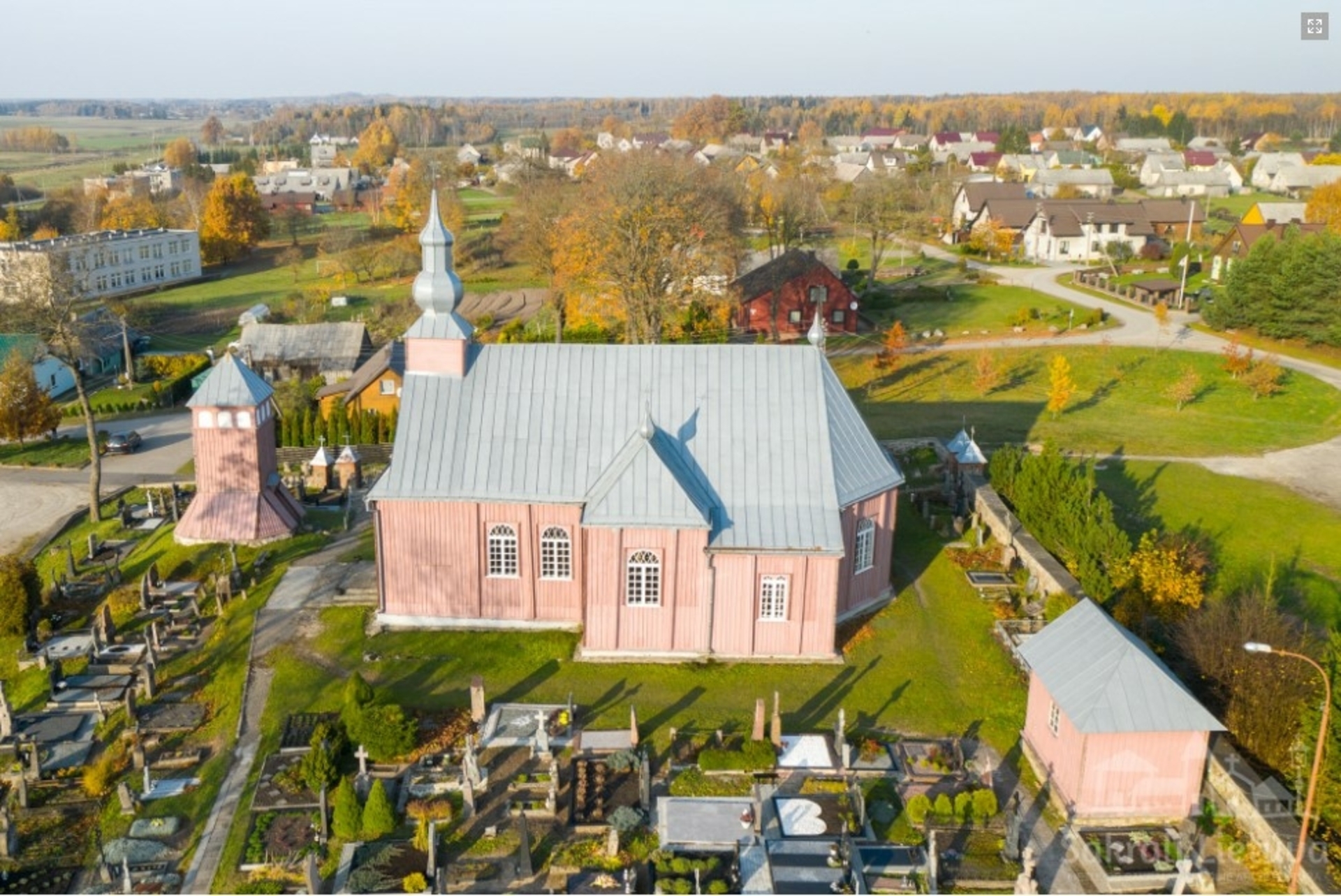Eigirdžiai Church of Divine Providence

246

0

0
0 out of 5
(0 reviews)
The Eigirdžiai Church of Divine Providence was built in 1795 through the efforts of priest Antanas Grabauskas. This historic church, located in Lithuania, is a remarkable example of folk architecture combined with Baroque style. Designed in the shape of a Latin cross, the church features two symmetrically arranged chapels and sacristies attached to the main building under the roof’s slope.
Info
-

Religious Heritage
-
The Eigirdžiai Church of Divine Providence was built in 1795 through the efforts of priest Antanas Grabauskas. This historic church, located in Lithuania, is a remarkable example of folk architecture combined with Baroque style. Designed in the shape of a Latin cross, the church features two symmetrically arranged chapels and sacristies attached to the main building under the roof’s slope.
The church’s foundation is plastered, while the walls are clad vertically with narrow strips covering the joints between the boards. The verticality of the facades is accentuated by pilasters between the windows. The roof, covered with metal sheets, has a gabled design, and the apses are hipped. The roofs of the lower transept chapels are half-hipped. The roof ridges are adorned with onion-shaped pedestals topped with ornamental crosses. The front facade is crowned by a low, four-sided tower with a Baroque-style dome.
The facade's pediment is decorated with a chevron pattern, with a small square window at its center framed with moldings. The windows are ornate, featuring paired rectangular
windows with semicircular arches and decorative divisions. The doors are wide, double-leaved, with diamond patterns and ironwork created by blacksmiths, and above them are three small arched windows.
The interior of the church consists of a single nave with a vestibule separated by columns decorated with carved bases. Above the vestibule rises a Baroque organ prospect, believed to have been created in 1863 by the master M. Gawryllowiczius. The organ case is representative of the typical late Baroque organ-making school of Vilnius. The church is rich in polychrome ceiling paintings and a painted cornice strip along the walls. The five altars, like the organ, are of Baroque style.
Within the churchyard, you’ll find a small cemetery and an old two-tiered square-plan bell tower. The lower part of the bell tower has a recessed door with a small roof, while the formerly open arcade at the top is now sealed. The bell tower is topped with a pyramid-shaped metal roof and a cross. The churchyard is surrounded by a low stone wall with gateposts made of rectangular masonry.
Found a mistake?
Report

 Entertainment
Entertainment
 Food establishments
Food establishments





























 56.009746, 22.37342
56.009746, 22.37342
 Get directions
Get directions









